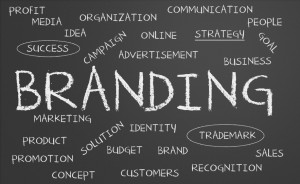Branding is critical and has the power to determine the success of your business. Good branding can turn any business from blah to “brandtastic” in a matter of seconds. A brand is defined as an identifying mark, and as David Ogilvy said, “a brand is the intangible sum of a product’s attributes.” This means that a brand is not just one aspect of a business; it is how your customers perceive you at every touch point. For example, a brand is not just a name or a logo; it is your service, your social engagement, your sales process, the marketing, and everything in between.
Think of your brand as a person. Who is this person? What would he be like? What values would he share? How does this person make you feel? What kind of personality does he have? Is he young and cocky? Maybe middle-aged and professional? This is how you should be thinking of your business. It is this personality that should be radiated at all times.
Related Class: Branding 101: Defining Who You Are
If asked to name a couple of brands that you like, what would you say? Everyone has a brand that pops right into his or her mind. For me, Virgin is my personal favorite. The company’s branding is so prevailing it resonates. Virgin’s branding is not only powerful because it has such a strong presence, but its customer experience is superior to most. From the moment you buy a ticket to the first step you take off a Virgin Airlines plane, the experience is fun, new, clean, quick, and, most of all, enjoyable. I fly Virgin America anytime I can. Why? Because I think it is the best.
Richard Branson, CEO of Virgin, has established a very specific company culture. He is a “Tie-loathing adventurer and thrill seeker, who believes in turning ideas into reality.” He is full of life, ideas, and believes in doing whatever it takes to get the job done, and to do it right. All of his companies exude this sort of personality. So, how does Richard Branson ensure that this “way of thinking” is radiated at all levels? Richard Branson “doesn't hire people for their skills and qualifications. He hires them for cultural fit with one of his 400 companies.” By hiring the right people, Branson can make sure that the brand he has established and the personality he has created for his companies remains consistent at every touch point and at every point in the chain.
A great brand knows exactly where it stands in the marketplace. To start determining where your brand sits, you must first conduct a SWOT analysis. A SWOT analysis helps you figure out your strengths, weaknesses, opportunities, and threats.
Strengths: Determine what your strengths are and where you are excelling as a company. Do you have exceptional customer service? Are your sales outstanding?
Weaknesses: Which parts of your company do not resonate with your branding? What can be improved upon?
Opportunities: How can you grow? What opportunities exist in your market/industry for you and how can you take advantage of them?
Threats: Who are your competitors? What changes in the industry could threaten your company, and how can your brand survive? A threat could include marketing your brand to the wrong audience. You must know who your audience is and market to them appropriately.
The SWOT analysis allows you to differentiate yourself and determines where you best fit in the marketplace. Of course, your branding should reflect your findings.
Once you really hone in on what your company is, what it represents, and its place in the market, you can then start developing your vision and mission statements.
Vision Statement: Your vision statement should express what you want to become as a company. This is more of a guiding light, and conveys what your high-level goals are. Your vision statement should come from the founder and set the tone for what he or she envisions for growth, employees, values, contributions to the community, and more.
Tips:
- A vision statement should be the motivator for why your company does what it does everyday.
- Make it aspirational, not only inspirational.
- Express what your end goal is as a company.
Mission Statement: Your mission statement is your formal summary of the values and objectives of your company. It summarizes what you do, how you do it, and what you offer to your customers and clients.
It is important to develop these statements, as they will help organize and focus your strategies in the way you brand and market your company.
Tips:
- Keep it short and sweet.
- Convey value and inspiration.
- Be specific with what your company does.
- Answer the question: Why does your company exist?
- Answer the question: How will your company achieve its goals?
- Your mission statement is not set in stone, so revisit it often.
Now that you have your vision and mission statements down, it is time to start building your brand. That means that your branding must be consistent at every touch point with your customer. From your product/service to your customer support and follow-up, everything must reflect the values and ideals that you outlined.
Remember, a brand can always evolve, however, building a strong foundation is the key to developing a brand that lasts, not just a company that is here today and gone tomorrow!
